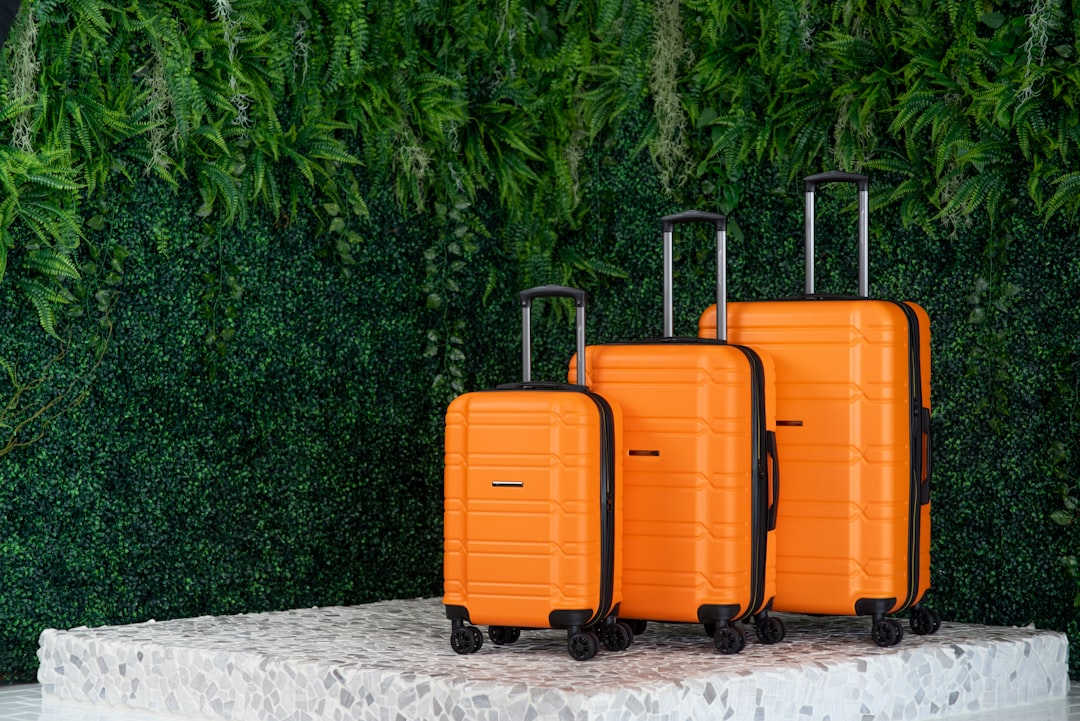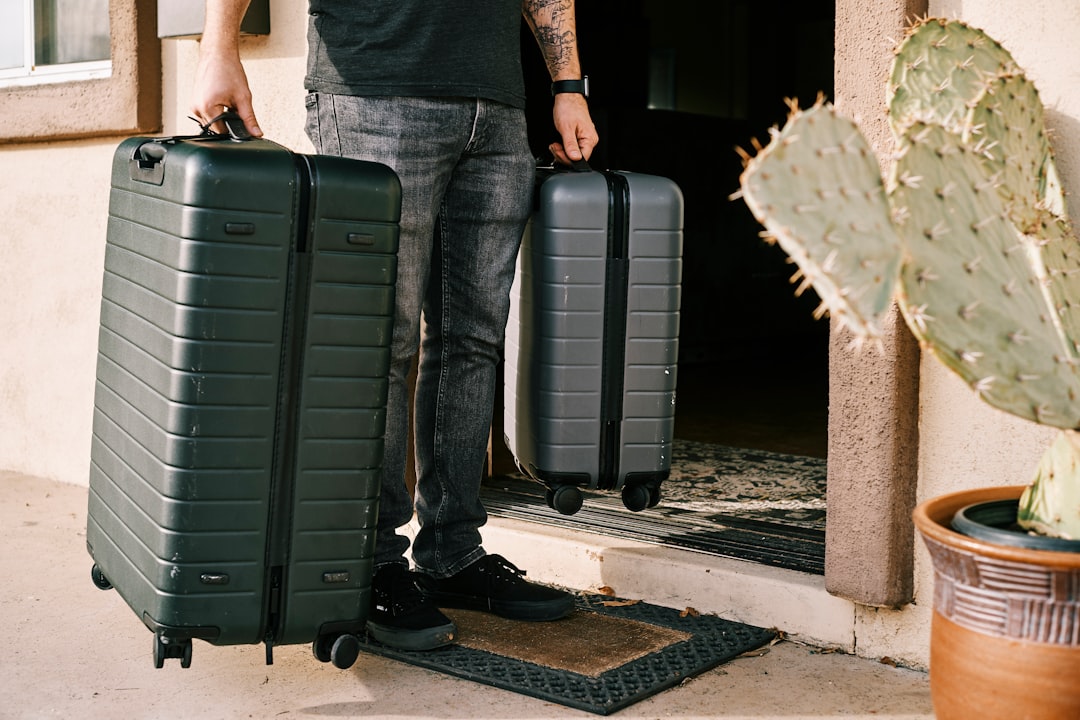

Engage prospects with a scan and streamline customer engagement with FREE QR code marketing tools by Sona – no strings attached!
Create a Free QR CodeFree consultation

No commitment

Engage prospects with a scan and streamline customer engagement with FREE QR code marketing tools by Sona – no strings attached!
Create a Free QR CodeFree consultation

No commitment
QR codes have become a strategic powerhouse for bridging offline engagement with online action, especially for luggage carrier suppliers. They provide a seamless and highly effective way to boost conversions, streamline customer experiences, and connect each physical touchpoint to actionable digital destinations. The industry still struggles with challenges such as anonymous high-value prospects who interact with products but never make it into the CRM, resulting in untapped revenue opportunities and incomplete revenue attribution.
The luggage carrier supplier landscape is evolving as travelers, retailers, and manufacturers demand more than durability. Buyers expect smart, sustainable, and customizable features. Adding QR codes to luggage tags, carriers, inserts, and packaging enables instant registration, real-time tracking, enhanced product authentication, and interactive customer support. These capabilities raise value for both distributors and end users, while giving suppliers real-time visibility into engagement that was previously invisible.
By integrating QR codes throughout the customer journey, luggage carrier suppliers boost operational efficiency and deliver data-rich experiences that keep customers engaged and loyal. These touchpoints allow for timely outreach and prevent missed upsell or cross-sell opportunities. They also help overcome persistent pains around attribution, conversion, and measurable value in this industry.

QR codes bridge the gap between physical touchpoints and digital outcomes, making it easier for luggage carrier suppliers to capture demand and convert offline interactions into measurable leads and sales. When high-value prospects interact with a luggage carrier on a retail floor, scan packaging, or handle a sample at a trade show but do not fill out a form, their interest is often lost. Marketing and sales teams remain unaware of silent demand, and pipeline creation lags.
To address this, suppliers should replace untracked analog processes with QR-powered experiences that reduce friction and capture data at the source. Consider the old approach of printed brochures, manual warranty cards, or handwritten trade show sign-up sheets. These materials get lost, returned late, or never submitted. A QR-driven process routes interest instantly to digital destinations where it can be tracked, segmented, nurtured, and attributed.
Key tactics include:
With dedicated QR platforms like Sona QR’s product overview, modern suppliers automate code creation, update destinations after print, and collect granular data for every scan. Each interaction helps you identify high-fit accounts, prioritize outreach, and secure critical lead information. And yes, Sona QR is built to support every step of this transformation.

Luggage carrier suppliers face increasing demand for personalization, security, and speed from both B2B buyers like retailers and distributors, and B2C buyers like travelers. Suppliers often struggle to see who engages with their products before a formal purchase or registration. Catalog readers, showroom visitors, and event attendees create anonymous traffic that goes unpursued, and valuable opportunities are lost.
QR codes address several gaps that are common in this vertical. They transform passive materials like swing tags, hangtags, inserts, and invoices into interactive experiences, creating a direct link to digital actions. Instead of asking a shopper to search for a brand website, a scan takes them straight to pages that convert. At scale, this reduces leakage between interest and action, while adding attribution to typically opaque channels.
QR codes address critical challenges such as:
By placing QR codes on tags, packaging, retail signage, invoices, and shipping labels, suppliers unlock verifiable insights and create compliance-friendly traceability. These touches help teams attribute real revenue to offline channels that were previously immeasurable.

QR codes provide flexibility for the wide range of luggage carrier applications. For this industry, certain formats align particularly well with buyer behavior at retail, during travel, and in after-sale support. Selecting the right format reduces friction and ensures each scan drives a purposeful next step.
Top formats include:
Dynamic QR codes provide agility and are highly recommended for campaigns and product packaging. They allow you to change destinations in real time, run A/B tests on CTAs, and route scans based on geography or time of day. With Sona QR, you can generate, manage, and update all of these formats in one place while maintaining consistent branding and analytics.

Growth depends on identifying and acting on buying signals at every physical and digital touchpoint. Many luggage carrier suppliers miss prospects who interact with products at trade shows, retail displays, or during travel because there is no clear path from offline interest to digital action. QR codes bridge these gaps by adding measurable conversion opportunities where people already engage with your brand.
Prioritize high-intent surfaces that can generate immediate outcomes like registrations, quote requests, or content downloads. Focus on visibility, scannability, and context. Keep CTAs clear and benefit oriented so the scanner knows exactly what they will get. Tie each placement to a funnel stage and route scans to the most relevant destination.
High-impact placements include:
Optimized QR placements fuel continuous lead capture, helping you connect analog spend to digital outcomes. Over time, you will build a more complete picture of customer engagement across channels and justify budget with data.

QR codes unlock practical value across the lifecycle from consideration to ownership and support. Choose use cases that align to specific moments when buyers need information or assistance. Then place codes where they can be discovered naturally.
Representative use cases:
These applications reduce friction at critical moments while surfacing data that helps close gaps in the customer journey. Over time, the same codes enable proactive outreach such as accessory recommendations and service reminders tied to ownership milestones.
Every scan from a luggage tag, display, or product insert is a chance to understand and respond to buyer intent. Many suppliers find that scan events stay anonymous because they are not tied to forms or CRM integrations. A disciplined QR strategy transforms these moments into structured audience signals that activate your email, SMS, and media channels.
Start by aligning codes to journey stages and by segmenting scanners based on context. Treat a scan on a product registration tag differently from a scan on a trade show poster. Create behavioral cohorts so your messages reflect the exact problem the buyer is trying to solve. Then sync segments to your CRM and ad platforms to trigger personalized follow-ups. Use Sona’s retargeting playbook to plan audiences that reflect real intent.
Core steps to build high-value audiences:
For this industry, segment by role as well. Distinguish retail buyers, corporate procurement teams, and individual travelers. Treat retailer scans as sales enablement leads and traveler scans as post-sale growth opportunities. With Sona QR, each code becomes a smart entry point that builds these segments based on real behavior, not assumptions.
QR codes are more than convenient links. They are connectors that unify offline and digital marketing, enabling real-time engagement and richer data collection across every channel that luggage carrier suppliers use. The key is to make QR the default bridge from any physical impression to an intentional digital outcome, then centralize analytics so you can see what is working.
Begin by mapping your channels and materials. Identify where prospects encounter your brand without an obvious path to act, such as catalog pages, endcaps, or conference displays. Add codes with clear CTAs and destinations that fit the moment. Then use a platform like Sona QR to monitor scans by placement and route data to your CRM for attribution and retargeting.
Examples tailored to luggage carrier suppliers:
QR codes serve as the offline onramp to your digital marketing engine. They also unlock a new layer of data collection across channels that were once difficult to measure. With a centralized platform like Sona QR, you can manage all your codes, monitor performance, and sync scan data with your CRM and ad platforms.
A structured approach helps teams move from idea to measurable impact quickly. Use this checklist to plan, launch, and optimize QR campaigns that drive conversions for luggage carrier suppliers.
Clarify the single most important outcome you want from the campaign. Popular goals in this vertical include warranty activation at unboxing, retailer reorder initiation from invoices, trade show demo bookings, and sustainability engagement from packaging. A focused use case ensures that your QR destination, form fields, and CTA align to the moment of interest.
Choose between static and dynamic codes based on how much flexibility and tracking you need. For assets that will not change, a static code may be sufficient. For campaigns and packaging that will evolve, dynamic codes are best because they allow routing updates and richer analytics.
The best QR code is the one that gets scanned. Design decisions influence scannability and conversion. Make codes large enough, contrast high, and placement intuitive. Add a visual frame and a CTA that promises value. Before full production, test across environments and devices.
Place codes where engagement is already happening but attribution is weak. The goal is to capture intent and speed the next step. Use a deployment plan that spans the journey and consider batch-level codes to measure performance by SKU, retailer, or event.
Launch is the starting line. Review scan and conversion data weekly, identify friction, and iterate. Tie each code to business outcomes, not just scan counts. Over time, you will learn which CTAs, placements, and offers perform best for your audience.
Modern QR platforms connect scan data with marketing and CRM systems. This streamlines campaign measurement and optimization so you can scale what works and retire what does not.
Luggage carrier suppliers require robust attribution to link QR code activity with revenue. Tracking scans is useful, but without connecting those scans to form fills, sales conversations, or repeat orders, you cannot prove business impact. Traditional print and event tactics often stop at distribution volume, leaving you blind to outcomes. QR codes, paired with the right analytics stack, provide the missing visibility.
The goal is to unify real-world engagement with your digital pipeline. That means tagging codes by asset and channel, capturing contextual metadata, and synchronizing everything with your CRM. With that foundation, you can segment by buyer type, prioritize hot accounts, and demonstrate how offline engagement contributes to pipeline and closed revenue.
With Sona QR and Sona, an AI-powered marketing platform that turns first-party data into revenue, you can:
The result is a closed-loop view of your offline impressions and their contribution to revenue. This lets you scale QR programs confidently, allocate budget based on ROI, and continuously improve channel performance.
Teams that get the most from QR codes follow a few practical habits. They instrument every placement for measurement, design with the user’s context in mind, and integrate scan activity into marketing systems for timely follow-up. They also educate staff and customers to set expectations and drive adoption.
Choose tips aligned to your most common media and buyer journey. For luggage carrier suppliers, that typically includes retail displays, packaging, trade show assets, and post-purchase inserts. Emphasize speed, clarity, and a valuable payoff for scanning.
Recommended best practices:
A creative example that works well: add QR codes to limited-edition luggage certificates of authenticity. Scanning confirms the product, unlocks exclusive content, and enrolls the buyer in a loyalty path that highlights accessories and future releases.
QR codes are transforming luggage carrier suppliers by turning every product, tag, and marketing asset into an interactive gateway. They solve challenges like missing prospects, untracked offline engagement, and slow follow-up by creating instant pathways to action. Each scan bridges offline and online experiences, producing actionable insights that help you capture more opportunities and optimize strategy.
In a rapidly changing marketplace, suppliers who adopt QR code solutions gain a clear advantage. They enable smarter engagement, faster follow-up, and stronger data-driven growth across channels. With Sona QR tracking every touchpoint and Sona.com connecting scans to revenue, you can prove impact, scale winning tactics, and sustain competitive advantage. If you are ready to start, Start creating QR codes for free.
QR codes have transformed the luggage carrier suppliers industry from static product displays into interactive, data-driven conversion engines. Whether it’s attracting new buyers, enhancing the customer journey, or providing instant access to product details and promotions, QR codes replace guesswork with real-time insights that turn every label, tag, or brochure into a powerful sales tool. Imagine knowing exactly which product tags or marketing materials spark the most interest—and acting on that knowledge immediately.
With Sona QR, you can effortlessly create dynamic, trackable QR codes that update campaigns without the need to reprint materials, connect scans directly to sales data, and optimize your customer acquisition strategies. No more missed opportunities—just smarter, measurable growth tailored to the unique needs of luggage carrier suppliers. Start for free with Sona QR today and turn every scan into a meaningful connection, lead, or closed deal.
QR code luggage tags enable instant registration, real-time tracking, enhanced product authentication, interactive customer support, and provide valuable data insights that improve customer engagement, loyalty, and operational efficiency.
QR codes replace analog processes with digital touchpoints that reduce friction, capture customer data instantly, track engagement, and enable timely outreach, turning offline interactions into measurable leads and sales.
While the article does not specify exact materials, luggage tags typically include durable, customizable materials that support QR code printing and withstand travel conditions, often including hangtags, inserts, and packaging components.
Suppliers can personalize QR codes on luggage tags by linking them to owner profiles, warranty activation, real-time tracking, care instructions, and support flows customized by SKU or batch, enhancing user experience and data collection.
QR codes enhance travel by enabling instant product registration, lost-and-found recovery, accessing care and sustainability information, providing AR demos at retail, streamlining reorder processes, and offering self-service support options.
QR codes capture detailed scan data such as time, location, device type, and campaign source, which can be synced with CRM systems to link offline engagement to revenue and provide a closed-loop view of marketing effectiveness.
Common formats include web links to product pages or support, vCards for contact sharing, SMS or email for support requests, Wi-Fi access for retail demos, and app download links, with dynamic codes offering real-time updates and analytics.
Suppliers should define clear campaign outcomes, choose between static or dynamic QR codes, design and test codes for scannability, deploy them across high-impact channels, and continuously track and optimize performance.
By assigning unique QR codes per journey stage and use case, capturing scan context, segmenting users by intent and role, and syncing data with CRM and advertising platforms, suppliers can create targeted retargeting campaigns based on real buyer behavior.
Best practices include using unique codes per asset, adding UTM parameters for attribution, triggering automated follow-ups, educating staff and customers on QR benefits, and creatively placing codes for maximum engagement and value.
QR codes transform passive physical assets into interactive digital gateways, reducing registration friction, improving personalization, enabling dynamic content updates, and capturing previously anonymous offline engagement for better follow-up and revenue attribution.
High-impact placements include custom luggage tags, product packaging, retail point-of-sale displays, trade show kits, direct mail, and shipping labels to capture intent and enable seamless digital engagement.
Use Sona QR's trackable codes to improve customer acquisition and engagement today.
Create Your FREE Trackable QR Code in SecondsJoin results-focused teams combining Sona Platform automation with advanced Google Ads strategies to scale lead generation

Connect your existing CRM

Free Account Enrichment

No setup fees
No commitment required

Free consultation

Get a custom Google Ads roadmap for your business






Launch campaigns that generate qualified leads in 30 days or less.
